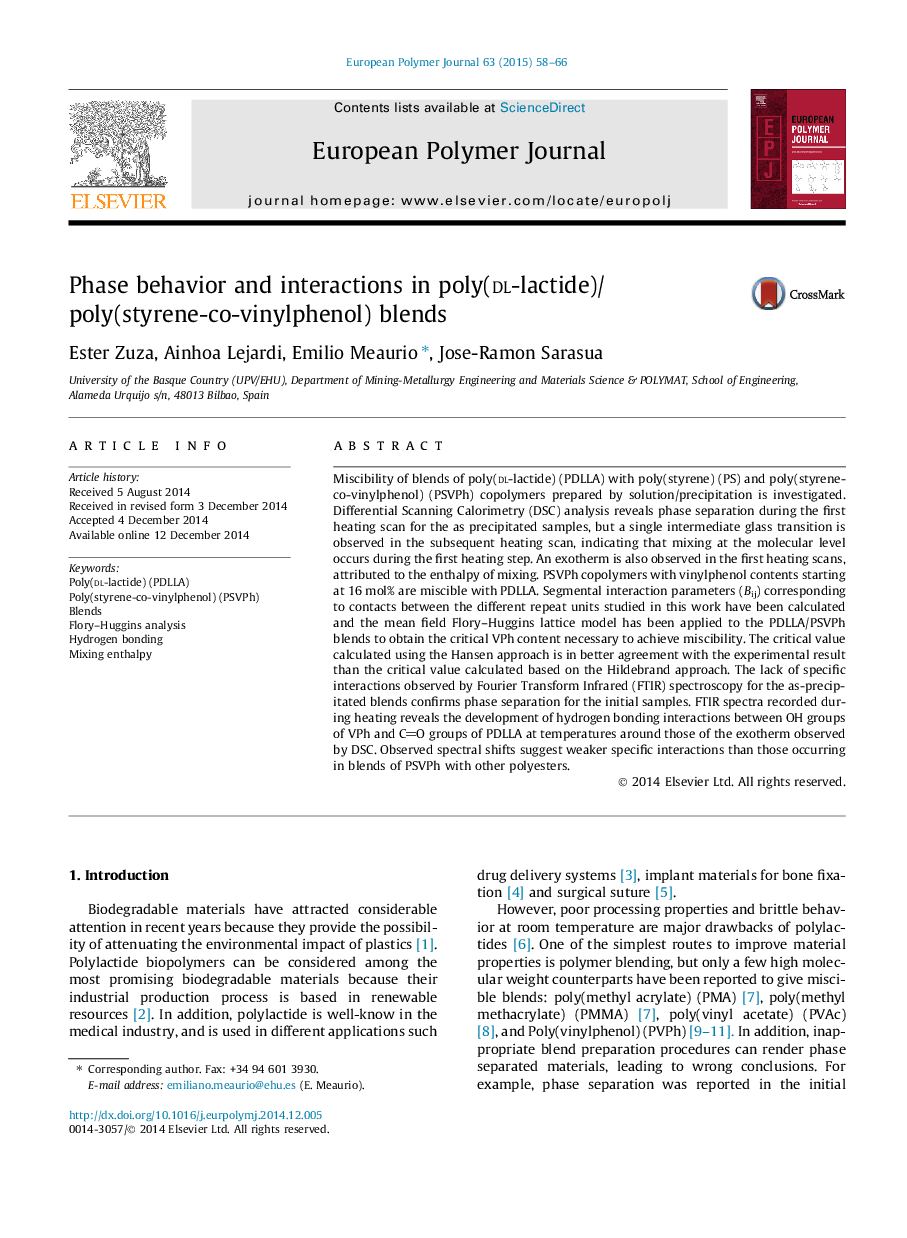| Article ID | Journal | Published Year | Pages | File Type |
|---|---|---|---|---|
| 1395425 | European Polymer Journal | 2015 | 9 Pages |
•The miscibility of PDLLA/PSVPh blends has been investigated using DSC and FTIR.•Polystyrene base materials with enhanced biodegradability have been developed.•Miscibility is achieved by functionalyzing only 16 mol% of the styrene units in PS.•The VPh content needed to achieve miscibility agrees with the theoretical estimation.
Miscibility of blends of poly(dl-lactide) (PDLLA) with poly(styrene) (PS) and poly(styrene-co-vinylphenol) (PSVPh) copolymers prepared by solution/precipitation is investigated. Differential Scanning Calorimetry (DSC) analysis reveals phase separation during the first heating scan for the as precipitated samples, but a single intermediate glass transition is observed in the subsequent heating scan, indicating that mixing at the molecular level occurs during the first heating step. An exotherm is also observed in the first heating scans, attributed to the enthalpy of mixing. PSVPh copolymers with vinylphenol contents starting at 16 mol% are miscible with PDLLA. Segmental interaction parameters (Bij) corresponding to contacts between the different repeat units studied in this work have been calculated and the mean field Flory–Huggins lattice model has been applied to the PDLLA/PSVPh blends to obtain the critical VPh content necessary to achieve miscibility. The critical value calculated using the Hansen approach is in better agreement with the experimental result than the critical value calculated based on the Hildebrand approach. The lack of specific interactions observed by Fourier Transform Infrared (FTIR) spectroscopy for the as-precipitated blends confirms phase separation for the initial samples. FTIR spectra recorded during heating reveals the development of hydrogen bonding interactions between OH groups of VPh and CO groups of PDLLA at temperatures around those of the exotherm observed by DSC. Observed spectral shifts suggest weaker specific interactions than those occurring in blends of PSVPh with other polyesters.
Graphical abstractFigure optionsDownload full-size imageDownload as PowerPoint slide
